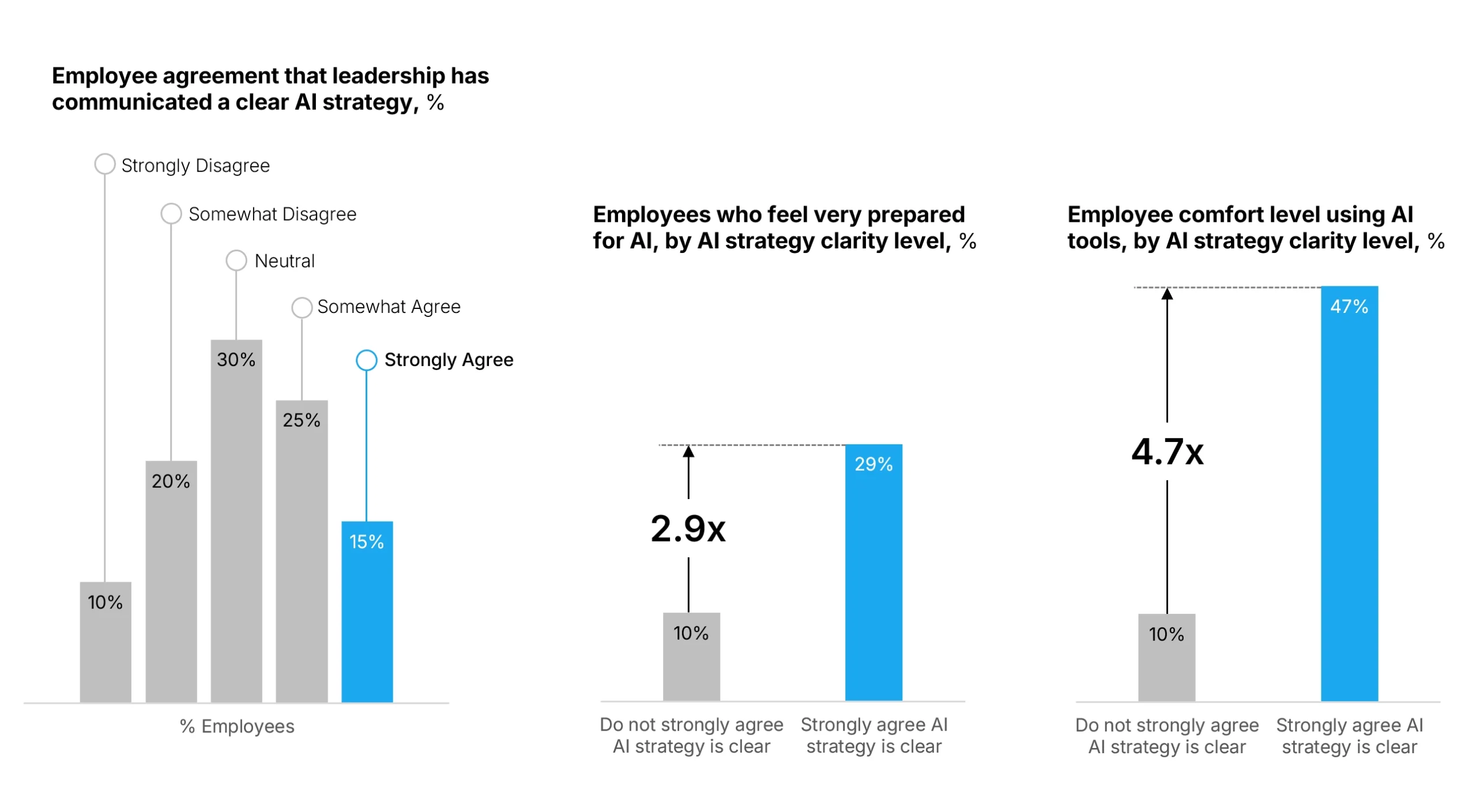Generative AI won’t deliver results without this critical leadership skill
Canadian CEOs are making bold moves with generative AI. Leaders at RBC, Manulife, and tech firms like League are mandating employee usage, restructuring job descriptions, and even conducting layoffs to become "AI-first" companies. The message to employees is clear: adapt or be replaced by someone who will.
But there's a critical disconnect between executive action and employee understanding. While executives rush to implement AI tools across their organizations, most employees remain completely in the dark about their organization's actual strategy. New research reveals a striking communication gap: only 15% of employees strongly agree their organization has communicated a clear AI strategy.

Sources: Employee survey data: Ratanjee, V., & Royal, K. (2024, November 1). Your AI Strategy Will Fail Without a Culture That Supports It. Gallup.BTS. (2022). Data for “3.4 times more likely to report successful execution” Mindsets: Gaining Buy-In to Strategy. BTS Research Report.
When leaders do communicate effectively, the results are dramatic. Employees with clear AI strategy visibility are 2.9x more likely to feel very prepared for AI and 4.7x more likely to feel comfortable using AI tools. The data shows that strategy clarity isn't just nice-to-have—it's the foundation that determines whether your AI investment succeeds or becomes another expensive experiment. Research shows that teams that strongly believe in the strategy are 3.4x more likely to report successful execution of strategic priorities.
Most organizations are investing heavily in AI tools while overlooking the human element that makes those tools effective. The technology is ready, but are your people? Success requires more than buying the right software—it demands bringing everyone along through clear, consistent communication that addresses both the rational business case and the emotional reality of change.
